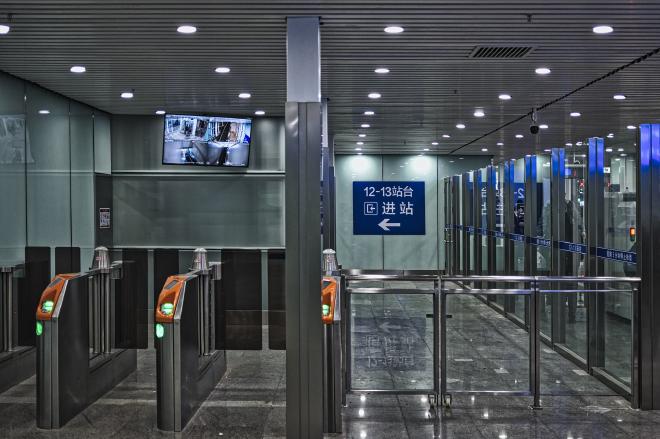Forwarding ports with firewalld

Table of Contents
I’ve tamed many of my complex firewall rules with firewalld over the years. It allows you to divide your devices, destinations, and network interfaces into zones. From there, you apply rules to zones. In addition, it handles all of the difficult work on the backend with iptables and nftables.
Forwarding ports remains a tricky process in firewalld, but there are a few different ways to work through it.
Using the simple syntax #
The firewall-cmd man page shows the syntax for setting a forward port rule. Here’s a simple one for port 80 going to a device on a LAN:
--add-forward-port=port=80:proto=tcp:toport=8080:toaddr=192.168.10.50
This line says to catch packets on port 80 and forward them to port 8080 on
192.168.10.50. You can also leave the toaddr off the arguments to forward the
port to the same server where the firewall is running:
--add-forward-port=port=80:proto=tcp:toport=8080
This rule catches packets on port 80 and redirects them to port 8080 on the same host. This could be handy for running a rootless podman container on a host where the container doesn’t have enough privileges to run on port 80.
Let’s try this example on our firewall. First, I’ll start a rootless podman container on port 8080:
$ podman run -d -p 8080:80 docker.io/traefik/whoami
Trying to pull docker.io/traefik/whoami:latest...
Getting image source signatures
Copying blob 69d0b1dd9140 done
Copying blob f089da391c25 done
Copying blob 65aa504e5268 done
Copying config 10d7504ea2 done
Writing manifest to image destination
Storing signatures
6e32b04c8933a6864249b20fd9aa27b8fc85c7c75f1c5b6f5f1ae76457f58c1c
(The whoami container is a great way to hunt down networking problems with
containers or routers in front of containers.)
Now I can try to connect with curl via IPv4:
$ curl -4 testserver
curl: (7) Failed to connect to testserver port 80: No route to host
Ah, we forgot to forward the port! 🤦🏻♂️ Let’s do that now:
# firewall-cmd --add-forward-port=port=80:proto=tcp:toport=8080
success
# firewall-cmd --list-all
FedoraServer (active)
target: default
icmp-block-inversion: no
interfaces: enp1s0
sources:
services: cockpit dhcpv6-client ssh
ports:
protocols:
forward: no
masquerade: no
forward-ports:
port=80:proto=tcp:toport=8080:toaddr=
source-ports:
icmp-blocks:
rich rules:
And now the curl:
➜ curl -4 testserver
Hostname: 6e32b04c8933
IP: 127.0.0.1
IP: ::1
IP: 10.0.2.100
IP: fe80::3c96:8dff:fec3:2d01
RemoteAddr: 10.0.2.100:35586
GET / HTTP/1.1
Host: testserver
User-Agent: curl/7.76.1
Accept: */*
And now we have the reply from the whoami container on port 80! Let’s try IPv6:
➜ curl -6 testserver
curl: (7) Failed to connect to testserver port 80: Permission denied
Darn! 🤔
Investigating IPv6 #
As I mentioned earlier, firewalld manages iptables and nftables on the backend for you automatically. I’m using Fedora 34, and firewalld uses nftables by default. We need to see which rules nftables has for port 80:
# nft list tables
table inet firewalld
table ip firewalld
table ip6 firewalld
# nft list table ip firewalld | grep 80
tcp dport 80 redirect to :8080
# nft list table ip6 firewalld | grep 80
#
Ah, the rules for IPv6 aren’t there! There’s a little note in the firewall-cmd
man page for us:
For IPv6 forward ports, please use the rich language.
Time to get rich #
You have two options here to get port forwarding working on both IPv4 and IPv6:
- Use the simple syntax for IPv4 and the rich rules for IPv6
- Use rich rules for both IPv4 and IPv6
Option 2 is my preferred one since it’s consistent between both IPv4 and IPv6.
Let’s start by removing our port forward rule (just run the same command as
before but replace add with remove):
# firewall-cmd --remove-forward-port=port=80:proto=tcp:toport=8080
success
Now, let’s add some rich rules:
# firewall-cmd --add-rich-rule='rule family=ipv4 forward-port to-port=8080 protocol=tcp port=80'
success
# firewall-cmd --add-rich-rule='rule family=ipv6 forward-port to-port=8080 protocol=tcp port=80'
success
# firewall-cmd --list-all
FedoraServer (active)
target: default
icmp-block-inversion: no
interfaces: enp1s0
sources:
services: cockpit dhcpv6-client ssh
ports:
protocols:
forward: no
masquerade: no
forward-ports:
source-ports:
icmp-blocks:
rich rules:
rule family="ipv6" forward-port port="80" protocol="tcp" to-port="8080"
rule family="ipv4" forward-port port="80" protocol="tcp" to-port="8080"
Now let’s try connecting on IPv6:
$ curl -6 testserver
Hostname: 6e32b04c8933
IP: 127.0.0.1
IP: ::1
IP: 10.0.2.100
IP: fe80::3c96:8dff:fec3:2d01
RemoteAddr: 10.0.2.100:35590
GET / HTTP/1.1
Host: testserver
User-Agent: curl/7.76.1
Accept: */*
Double check the nftables rules:
# nft list table ip firewalld | grep 80
tcp dport 80 redirect to :8080
# nft list table ip6 firewalld | grep 80
tcp dport 80 redirect to :8080
And save the firewalld configuration so it persists through reboots:
# firewall-cmd --runtime-to-permanent
success
Enjoy your freshly forwarded ports. 🎉
Photo credit: Eric Prouzet on Unsplash